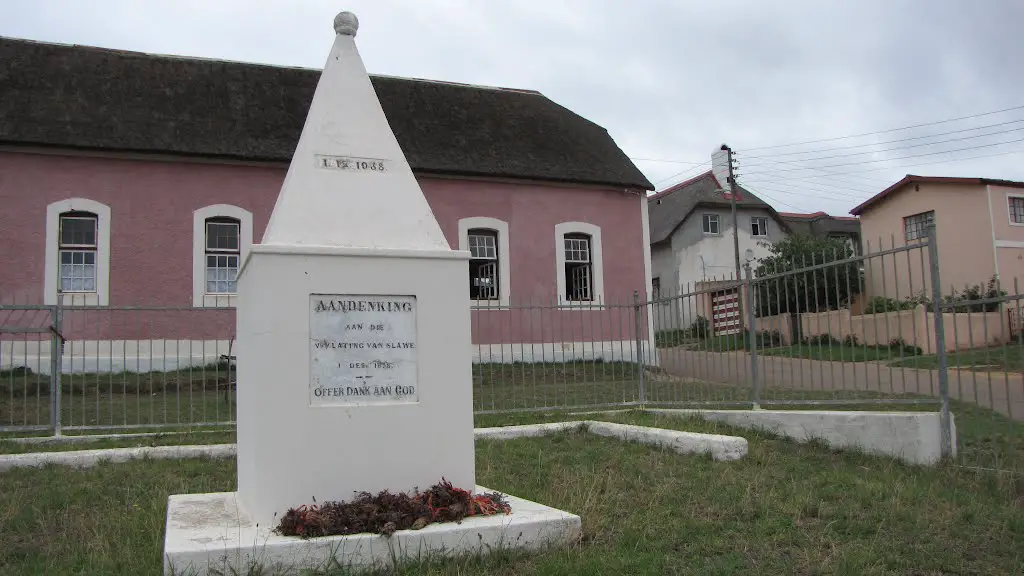

Slave Monument
The first slave monument in South Africa, in memory of the emancipated slaves who found refuge in this Overberg sanctuary, was built at the Elim Moravian Mission Station, a village owned and managed by the Moravian Church.
The village is home to 2 500 people, most of them of slave descent and all of them so-called ‘coloured’ (of mixed race – by the time slavery was abolished in the 19th Century, the Cape’s slave population had become a melting pot that mingled the genes of indigenous Khoi and San people, East and West Africans, South-east Asians and European settlers).
The mission station at Elim was established in 1824, when German missionaries arrived at the Cape Colony, by then under British rule.
Biblically, Elim is the place the Israelites rested after crossing the Red Sea. It was a place of cooling waters and palm trees.
In the Cape, Elim was also a refuge: a place of safety, initially for the indigenous Khoi people and later for hundreds of destitute freed slaves.
Elim’s Moravian church was built in 1835 and is one of a few places of worship built in the Cape Dutch style.
The mission station was established by Bishop Hallbeck on May 24, 1824 in what is now the Overberg region of Western Cape province. Fynbos abounds, and fig trees line the entrance to the village.
Elim residents were taught trades and skills by the missionaries. The country’s first slave monument was built in 1938, a century after emancipation, in homage to the people who had become the majority of the Elim community.
The monument was ‘re-unveiled’ in 2004 after falling into disrepair in the 1990s. It was rebuilt in time to mark the United Nations declaration that 2004 was the year to celebrate the victory of humanity’s struggle against slavery. From 1837 to 1840, the population of Elim doubled from 350 to to 715, and in 1854 it rose to 1 241 – as more and more freed slaves sought refuge there.
All three Moravian mission stations, Elim, Genadendal and Mamre, opened their doors to freed slaves. It has been estimated that there were up to 60 000 slaves in the Cape at the time of emancipation on 1 December 1834 and following their release from bondage, many were left destitute by their former masters.
Some found refuge at the mission stations, where they were baptised and their names changed. Each family was given a plot to build their homes, as well as garden plots and a subsidy to start off with.
Many of the cottages are still whitewashed every year, the brilliant white offset by the dark thatched roofs, a skill at which Elim men are still very adept. Their thatching skills are sought the world over.
The working watermill, which used to grind the flour for the local bakery, was restored to its original state and declared a national monument in 1974.
Elim is still owned by the Moravian Church, and the village has national heritage status.
Even today, whitewashed houses sparkle in the sun, most of the roofs are neatly thatched and all roads, still, lead to the beautiful Moravian church. The church clock, which is more than 240 years old, was installed in 1914. The clock was built in Germany and was initially installed in a church in Herren, Germany in 1764.
The old Mission Shop has been converted into a museum, filled with hand-crafted pieces and many photographs chronicling the community’s history.
The watermill, dating back to 1833 and boasting the largest wooden water wheel in South Africa, was restored in 1990. The mill can still be used for grinding wheat.
A trip to Elim will not be complete without enjoying the local hospitality at the Old Mill Tearoom. The tearoom forms part of the heritage centre, where visitors can also learn more about the community’s history.
Church plays an integral part of life in Elim. Many people who have moved to Cape Town go back regularly to spend time with their family or to observe Easter and Christmas. The Moravian Brass Band also has a proud musical tradition.
Tel: 028 008 5033
Email: amandacloete098@gmail.com
Cost: R20

